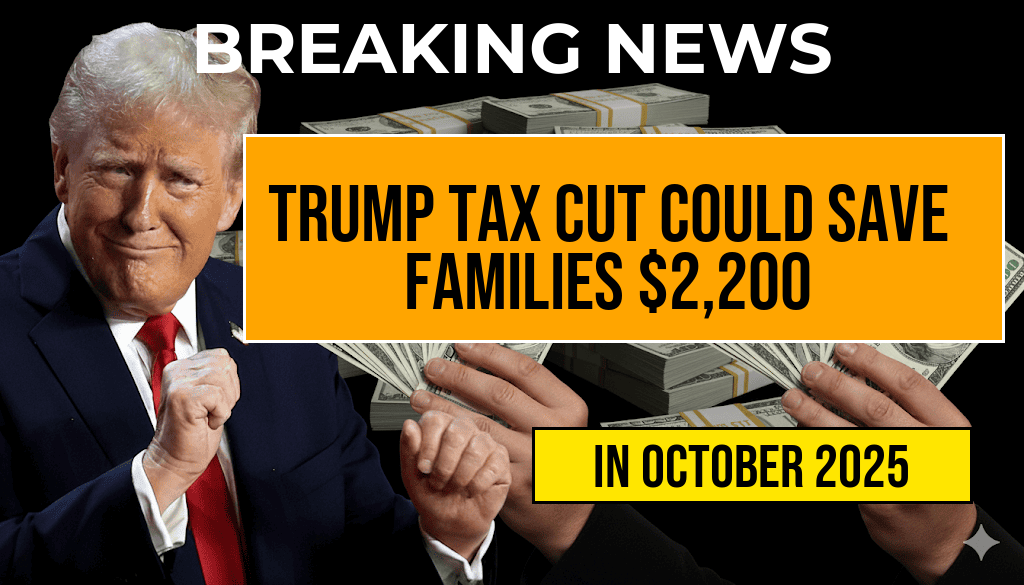The recent analysis by The Washington Post indicates that while the Trump-era tax cuts did not deliver the largest reductions in federal tax revenue, many American families could still see significant savings—up to $2,200 per child. This potential benefit hinges on recent legislative adjustments and expanded tax credits aimed at supporting families, especially those with children. Unlike the broader corporate tax reforms, these targeted measures have a more direct impact on households, making them a focal point for policymakers and voters alike.
Understanding the Tax Cuts and Family Benefits
Context of the Trump Tax Cuts
The 2017 Tax Cuts and Jobs Act (TCJA) was a sweeping overhaul that reduced corporate tax rates from 35% to 21%. While these changes primarily aimed to boost economic growth and attract investment, they also included provisions affecting individual taxpayers. However, the overall revenue loss from these cuts was substantial, leading some critics to argue that the benefits favored corporations over middle- and lower-income families.
Targeted Family Tax Credits
Recent legislative adjustments have expanded certain tax credits designed specifically to aid families. The Child Tax Credit (CTC), for example, saw an increase in its maximum value and expanded eligibility during the COVID-19 pandemic relief efforts. These changes temporarily allowed more families to claim larger credits, which translated into tangible savings at tax time.
| Year | Maximum Credit | Eligibility |
|---|---|---|
| 2021 | $3,600 per child under 6, $3,000 per child 6-17 | Income thresholds phased out |
| 2022 | Reverted to $2,000 per child | More restrictive income limits |
Potential Savings for Families
How Families Could Benefit
According to the Congressional Budget Office (CBO), families with children may see an annual tax savings that, in some cases, approaches or exceeds $2,200 per child. This figure accounts for the expanded Child Tax Credit, earned income tax credits, and other family-focused provisions. The size of the benefit varies depending on income, number of children, and filing status.
Qualifying Criteria
- Filing status (e.g., married filing jointly, head of household)
- Adjusted gross income (AGI)
- Number and age of children
- Residency and citizenship status
Impact on Different Income Groups
Middle-Income Families
For middle-income households, the expanded credits can significantly reduce tax liabilities, sometimes resulting in direct refunds that help cover education, healthcare, or everyday expenses. Families earning between $50,000 and $100,000 are most likely to benefit from the recent expansions, especially those with multiple children.
Lower-Income Households
Lower-income families often qualify for the full extent of refundable credits, meaning they may receive more money back than they owe in taxes. These measures serve as crucial support, especially as inflation continues to strain household budgets.
Limitations and Future Considerations
While the recent enhancements offer tangible benefits, they are often temporary or subject to legislative renewal. Critics argue that without permanent reforms, these gains may diminish over time, especially if tax policies revert to pre-pandemic structures. Policymakers remain divided over the best approach to balance fiscal responsibility with support for families.
Expert Opinions
Tax policy analysts warn that the true impact of these changes depends heavily on individual circumstances. Forbes notes that families should review their eligibility and consult tax professionals to maximize benefits.
Key Takeaways
- The Trump tax cuts reduced overall federal revenue but included provisions that benefit families with children.
- Recent legislative adjustments have expanded child-related tax credits, allowing families to save up to $2,200 per child.
- Benefits vary by income level, with middle- and lower-income families seeing the most significant impact.
- These tax benefits are subject to legislative renewal, emphasizing the importance of staying informed about policy changes.
Frequently Asked Questions
What is the main focus of the WaPo analysis regarding Trump’s tax cut?
The analysis examines how Trump’s tax cut impacts families, highlighting that while it may not be the largest tax cut overall, families could save up to $2,200 per child.
How much can families potentially save per child under the new tax policies?
Families could potentially save up to $2,200 per child thanks to the recent tax cuts analyzed by WaPo.
Does the article suggest that Trump’s tax cut is the largest in history?
No, the article clarifies that Trump’s tax cut is not the largest in history, but it still offers significant savings for families.
Who benefits most from the tax cut according to the analysis?
The analysis indicates that families with children stand to benefit the most, with potential savings of up to $2,200 per child.
Are the savings from the tax cut uniform for all families?
No, the savings vary depending on family income, number of children, and other factors, but some families could see savings of up to $2,200 per child.






